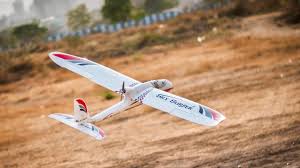World Record: Largest Remote-Controlled Aircraft Carrier Built by YouTuber
Innovation Takes to the Skies
The world of remote-controlled models has just been taken to new heights, quite literally. A YouTuber, known for their audacious engineering endeavors and borderline-outlandish projects, has achieved what once seemed impossible: the construction and successful deployment of the world’s largest remote-controlled aircraft carrier. Now, before you start wondering if it’s habitable, let’s delve into the details of this colossal creation that has the internet buzzing and engineering enthusiasts in awe.
The Genesis of a Gigantic Idea
Every grand project starts with a spark of inspiration. In this case, the YouTuber, with a penchant for naval engineering and a dash of eccentricity, decided to embark on this monumental task. The project wasn’t just about size; it was a fusion of technology, scale modeling, and sheer audacity. As one views this floating behemoth, it’s more akin to a modern marvel than a DIY project. This engineering feat not only challenges the boundaries of remote-controlled technology but also redefines them.
The Engineering Marvel Unveiled
Creating something as colossal as a remote-controlled aircraft carrier is no ordinary task. It involves intricate planning, precision engineering, and a touch of genius. The YouTuber, although secretive about some design specifics, revealed that the project involved:
- Detailed Blueprints: Accurate designs based on actual aircraft carriers to ensure structural integrity and buoyancy.
- Material Selection: Lightweight yet durable materials, such as specialized composites, were used to achieve the perfect balance.
- Advanced Electronics: The carrier boasts sophisticated control systems, reminiscent of those found in high-end drones and RC planes.
- Functional Deck: It’s not just for show; the deck houses smaller remote-controlled aircraft capable of takeoff and landing.
What truly sets this project apart is the seamless marriage of form and function. It’s not merely a scaled-up model; it’s a functional marvel that can navigate, launch aircraft, and even hold its own in choppy waters.
The Challenges and Triumphs
No colossal project is without its hurdles. Constructing the largest remote-controlled aircraft carrier required overcoming numerous challenges, including but not limited to:
- Weight Management: Achieving the ideal weight distribution to maintain stability and maneuverability on water presented a significant challenge.
- Propulsion System: Designing a propulsion system powerful enough to move the massive structure without compromising on control precision.
- Scale and Accuracy: The meticulous task of scaling down naval designs while preserving authenticity and operational functionality.
Despite these challenges, the YouTuber’s iron will and relentless pursuit of perfection prevailed. The achievement serves as a testament to human ingenuity and the unyielding spirit of hobbyists who dare to dream big.
The Impact on the RC Community
The introduction of this gargantuan remote-controlled wonder into the RC community has been met with widespread acclaim. It has sparked conversations, inspired budding engineers, and even prompted seasoned RC enthusiasts to reconsider the possibilities within their hobby. Here are a few impacts observed:
- Inspirational Ripple: The project has ignited new enthusiasm in the community, encouraging others to embark on ambitious projects.
- Technological Advancement: Innovations in control systems and materials have trickled down, potentially enhancing other RC models.
- Community Engagement: The project has fostered greater interaction and idea-sharing among engineers and hobbyists globally.
This enormous feat provides a spectacular platform for the community to collaborate and push the boundaries of what is achievable through RC technology.
Where to Next? The Future of RC Innovations
With this groundbreaking accomplishment marking a new chapter in RC innovations, the horizon is ripe for further revolutionary advancements. The frontier of remote-controlled technology is ever-expanding with potential developments in:
- Autonomous Navigation: Enhanced AI and machine learning could allow for fully autonomous RC vehicles.
- Enhanced Materials: Incorporation of next-gen materials for improved durability and performance in various environments.
- Integration of AR/VR: Augmented and virtual reality could transform the experience of operating these models, blending virtual simulations with real-world control.
The possibilities for growth and exploration in the world of RC models are limitless, with each new project only serving to fuel further curiosity and innovation.
Join the RC Revolution
For those inspired by this record-breaking creation, the world of remote-controlled technology offers countless opportunities to explore and expand your creative prowess. Whether your interest lies in RC planes, drones, or even projects as ambitious as the one discussed, there’s a vibrant community ready to welcome your ideas and contributions. If you wish to learn more about the latest trends and connect with fellow enthusiasts, check out Remote control aircraft, RC planes, RC helicopters, drones. It’s a world waiting to be explored.







